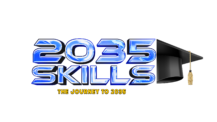IoT & Smart Sensors for Oil & Gas Operations – One Day USD 150 / Two Days USD 250 Per Pax
Description
-
Introduction to IoT in Oil & Gas
-
Understanding the Internet of Things (IoT) and its relevance to the energy sector
-
Key benefits: safety, efficiency, and cost reduction
-
Real-world applications in upstream, midstream, and downstream operations
-
-
Fundamentals of Smart Sensors and Devices
-
Types of industrial sensors: pressure, temperature, flow, vibration, and gas detection
-
Sensor communication protocols and connectivity basics
-
How smart sensors enable real-time decision-making
-
-
IoT Architecture and Infrastructure
-
Components: sensors, gateways, cloud, and analytics layers
-
Data collection, transmission, and processing pipelines
-
Integration between IT and OT systems
-
-
Wireless Communication Technologies in Oil & Gas
-
Wi-Fi, LPWAN, LoRaWAN, Zigbee, 5G, and satellite networks
-
Selecting the right connectivity for field conditions
-
Ensuring reliability and data continuity in remote operations
-
-
IoT in Upstream Operations
-
Exploration and drilling monitoring
-
Predictive maintenance for rigs and equipment
-
Real-time reservoir and production data acquisition
-
-
IoT in Midstream and Downstream Operations
-
Pipeline integrity monitoring and leak detection
-
Asset tracking and logistics optimization
-
Refinery automation and process optimization
-
-
Data Analytics for IoT Systems
-
Turning sensor data into actionable insights
-
Use of cloud analytics and machine learning
-
Case studies of data-driven operational improvements
-
-
Integration of IoT with SCADA and Control Systems
-
Enhancing traditional systems with IoT capabilities
-
Real-time alerts, dashboards, and mobile access
-
Overcoming interoperability challenges
-
-
Cybersecurity for IoT and Smart Devices
-
Common vulnerabilities in connected industrial devices
-
Best practices for secure configuration and monitoring
-
Managing access control and data encryption
-
-
Digital Twin Technology in Oil & Gas
-
Concept and benefits of digital twins
-
Integrating IoT data for simulation and prediction
-
Use cases: equipment, facility, and process twins
-
IoT Implementation Strategy
-
Planning, pilot testing, and scaling IoT projects
-
Cost-benefit analysis and ROI measurement
-
Managing vendors and technology partners
-
Future Trends and Innovations in IoT for Energy
-
Edge computing, AI integration, and smart automation
-
Sustainability and carbon monitoring with IoT
-
The evolving role of connected operations in Industry 4.0




